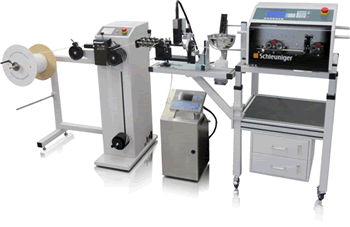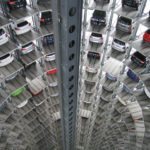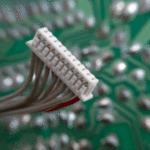Five Things to Know About Your New Cut-and-Strip Machine
There are many options when choosing wire processing equipment, so how do you know you’ve made the right choice? Pete Doyon of Schleuniger shares five things to know about your new cut-and-strip machine before you buy it.
 A lot of time and effort often goes into finding the right equipment for your facility. Purchasing a new wire cut-and-strip machine is no different. With so many options, where does one start? Ask these five questions during the decision-making process to ensure you end up with equipment that fits all of your needs.
A lot of time and effort often goes into finding the right equipment for your facility. Purchasing a new wire cut-and-strip machine is no different. With so many options, where does one start? Ask these five questions during the decision-making process to ensure you end up with equipment that fits all of your needs.
1. Will my new cut-and-strip machine be flexible enough to process all of my current and future applications?
Unless you’ll be running the same few jobs day in and day out, you’ll want a machine that is as flexible as possible. It is best to focus on the extreme ends of the application range in regard to wire and cable size. For example, if the largest wire you currently process is 10AWG, determine if there is a chance you’ll need to process 8AWG or larger wire in the future. You should also determine if there is a chance you’ll require advanced features like a multi-blade cutterhead (for processing multi-conductor cable jackets and inner conductors) or a rotary incision unit to make radial incisions through the various cable layers when processing coaxial and other multi-layer cables. Being prepared for future needs will allow you to get the most out of your purchase.
2. How long will changeovers take and are tools required?
Most modern cut-and-strip machines are fully programmable. However, there are always several job-specific mechanical parts (guide tubes, blades, etc.) that have to be changed between jobs. Changeover times can be minimized if these changes can be accomplished without tools. The smaller your batch size, the more frequent your changeovers will be. A cut-and-strip machine with shorter changeover times will provide a quicker ROI and continue to pay dividends over the life of the machine.
3. What is a realistic production rate I can expect with my new cut-and-strip machine?
When comparing data sheets for several different cut-and-strip machines, you’ll sometimes see a specification listed for “maximum transport speed.” A high maximum transport speed doesn’t always correlate to a high production rate, unless you are running longer lengths. The cutting axis and other machine specifications all contribute to the machine cycle time, so it’s better to focus on the maximum production rate listed for each wire length and application. It’s always best to send wire or cable samples to the machine manufacturer before purchasing to get realistic production rates for your specific application.
4. What pre- and post-processing accessories are available for my new cut-and-strip machine?
Keep in mind that typical entry-level cut-and-strip machines cannot be integrated with a full range of pre- and post-processing accessories. Determine what additional operations you’ll need and whether the manufacturer of the cut-and-strip machine offers fully integrated accessories for those operations. Typical operations include hotstamp or inkjet marking, coiling, and stacking to name a few.
Another of the most basic accessories is a prefeeder. They are available in many different sizes and styles. The most basic models feed wire and cable directly by pulling them through motorized belts or rollers. The more advanced prefeeders drive the cable reel directly, which is gentler on the wire or cable being fed. The most advanced models also feature a motorized reel lift and full enclosure for maximum safety. Make sure to specify a prefeeder that matches or exceeds the maximum acceleration and feed rates of your new cut-and-strip machine.
5. Will my new cut-and-strip machine be able to integrate with my ERP system or my Manufacturing Execution System software?
The factory of the future will require that all production equipment be connected to a network. When shopping for your next cut-and-strip machine, make sure that it has the connectivity required for integrating it into your network. Networking your cutting-and-stripping equipment opens up a whole new range of benefits. By sending jobs directly to the cut-and-strip machine, you’ll eliminate operator keystrokes (and possible errors) and save a lot of programming time. You’ll know exactly when each job is started and completed and be able to monitor average production rates. You’ll also be able to optimize work orders automatically in the best sequence, taking changeover times, due dates, available machines, and personnel into consideration. Finally, you’ll be able to keep track of how many cycles each machine has completed and when maintenance should be scheduled. An added benefit is that every job will have full traceability.
Choosing the right cut-and-strip machine for your factory is an easy task if you know what to look for. While purchase price is always a consideration, the main focus should be on procuring the most flexible machine that will offer the shortest ROI, resulting in the lowest cost per lead.
 Pete Doyon is vice president product management at Schleuniger Inc.
Pete Doyon is vice president product management at Schleuniger Inc.







